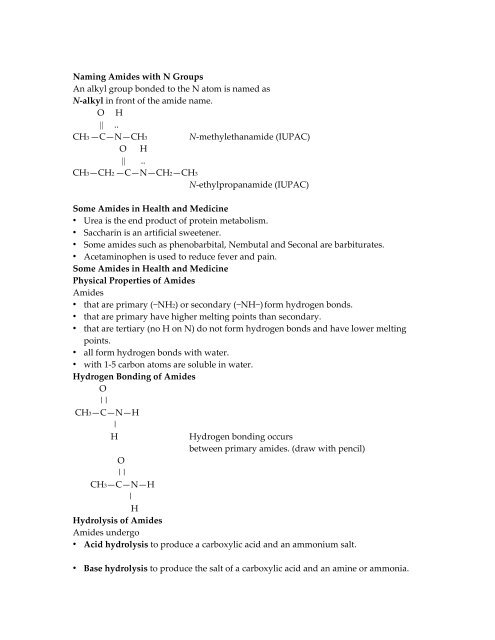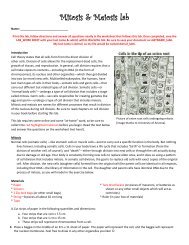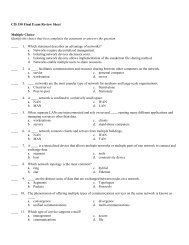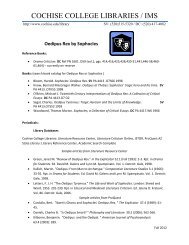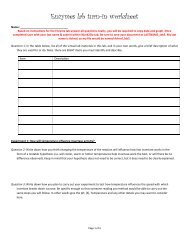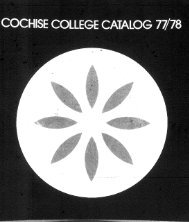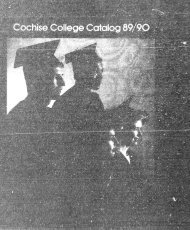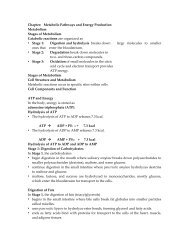Chapter 13 Carboxylic Acids, Esters, Amines, and Amides
Chapter 13 Carboxylic Acids, Esters, Amines, and Amides
Chapter 13 Carboxylic Acids, Esters, Amines, and Amides
- No tags were found...
You also want an ePaper? Increase the reach of your titles
YUMPU automatically turns print PDFs into web optimized ePapers that Google loves.
Naming <strong>Amides</strong> with N GroupsAn alkyl group bonded to the N atom is named asN‐alkyl in front of the amide name.O H|| ..CH3 —C—N—CH3 N‐methylethanamide (IUPAC)O H|| ..CH3—CH2 —C—N—CH2—CH3N‐ethylpropanamide (IUPAC)Some <strong>Amides</strong> in Health <strong>and</strong> Medicine• Urea is the end product of protein metabolism.• Saccharin is an artificial sweetener.• Some amides such as phenobarbital, Nembutal <strong>and</strong> Seconal are barbiturates.• Acetaminophen is used to reduce fever <strong>and</strong> pain.Some <strong>Amides</strong> in Health <strong>and</strong> MedicinePhysical Properties of <strong>Amides</strong><strong>Amides</strong>• that are primary (−NH2) or secondary (−NH−) form hydrogen bonds.• that are primary have higher melting points than secondary.• that are tertiary (no H on N) do not form hydrogen bonds <strong>and</strong> have lower meltingpoints.• all form hydrogen bonds with water.• with 1‐5 carbon atoms are soluble in water.Hydrogen Bonding of <strong>Amides</strong>O||CH3—C—N—H|HHydrogen bonding occursbetween primary amides. (draw with pencil)O||CH3—C—N—H|HHydrolysis of <strong>Amides</strong><strong>Amides</strong> undergo• Acid hydrolysis to produce a carboxylic acid <strong>and</strong> an ammonium salt.• Base hydrolysis to produce the salt of a carboxylic acid <strong>and</strong> an amine or ammonia.


